Sistine Chapel Periodic Conservation Maintenance Plan
Adopted By: The Florida Chapter
Description
The Periodic Conservation Maintenance Plan of the Sistine Chapel is the result of a complex organizational “machine,” which involves a plurality of skills ranging from the technical-scientific, logistical, and administrative sectors of the Museums. The Infrastructure and Services Directorate of the Governorate and the accredited external firms are committed to preserving the delicate balance within the “Sistine Chapel System”.
Balance is at the basis of maintaining the optimal state of health of the Sistine frescoes, linked in a direct way to the physical-chemical conditions of the environment that houses them, and that throughout the year is checked daily by the network of sensors that are specially designed and implemented for environmental monitoring. Promoted with conviction by the Museums management since 2012, as part of the broader strategy of preventive conservation of the collections on display and in storage, the Intervention Protocol is in the following operations: reconnaissance and periodic removal of dust from the painted surfaces, the chancel, the altar and the marble transept, gradual removal of any salification still present on the paintings, mapping of the state of conservation and review of areas subjected to previous consolidation and cleaning treatments, diagnostic analysis, maintenance and control of air conditioning and lighting systems and the entire monitoring systems.
The routine maintenance service lasts 5-6 weeks, usually between January and February, with evening working hours when the public is not present. For work at great heights, the operators use two mobile elevating platforms made available by the Governorate’s Infrastructure and Services Department, which allows them to reach a height of 20 meters. These platforms permit close inspections of the frescoed surfaces with the additional ability to maintain the terminal parts of the air conditioning, lighting systems, and the entire network of sensors for accurate environmental monitoring.
The Conservation Maintenance Plan is an essential part of state-of-the-art conservation sciences. The plan includes forming studies, lauching research, making discovieries, and collecting data to allow restorers, scientists, and technicians to evolve practices that use increasingly accurate and less invasive technologies. The Plan is configured as a best practice, consistent with the objective of ensuring the works - from frescoed surfaces to marble artifacts - the best conservation, and, at the same time, offering it for the public view and education offering it for the education and view of the public.
TOTAL COST: € 231.075,80 ($ 246,927.60)
Detail
Adopted By:
The Florida Chaptermuseum:
Sistine ChapelLaboratories:
Conservator‘s OfficeWishbook year: 2024
Sistine Chapel Periodic Conservation Maintenance Plan - Report
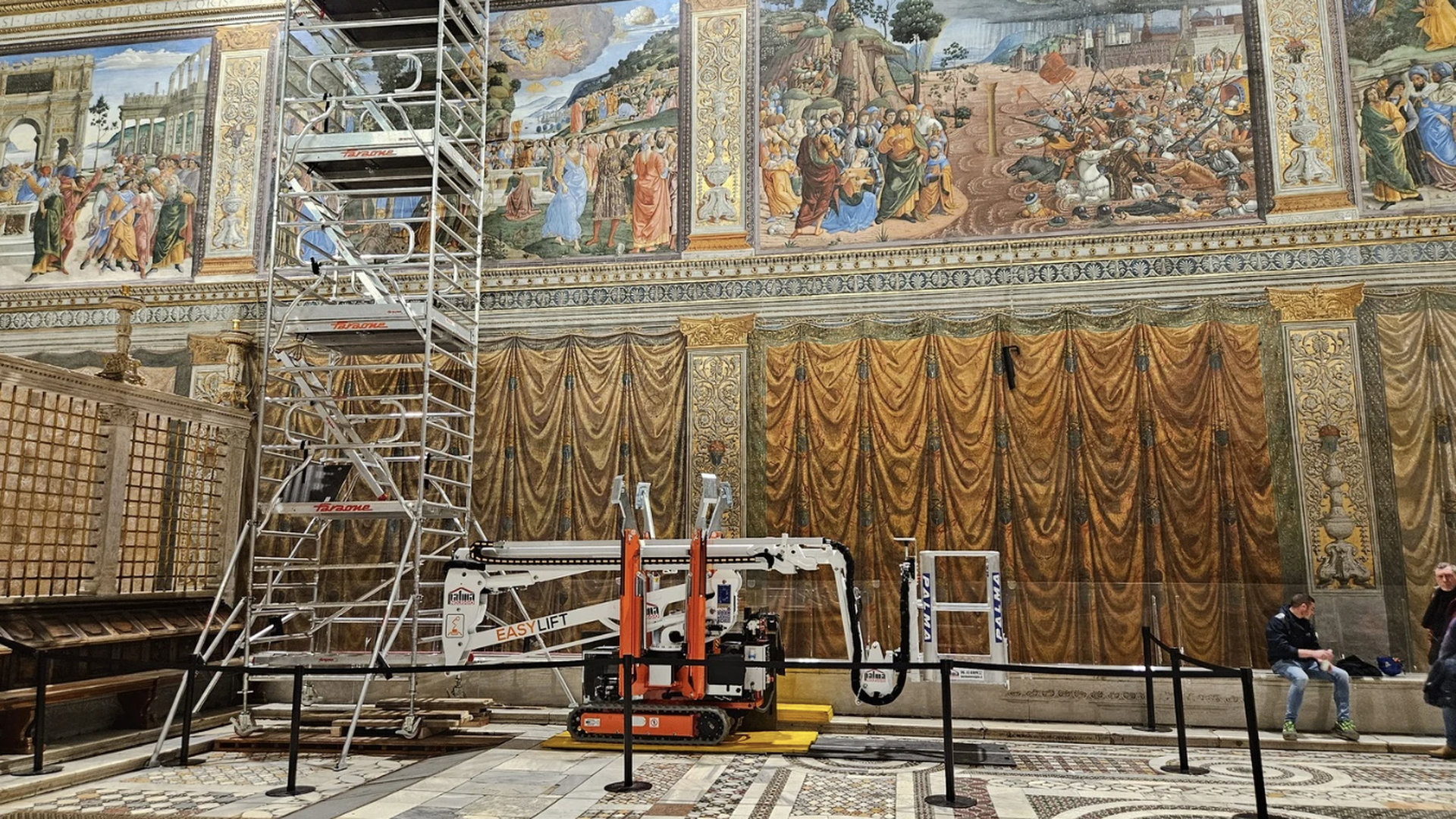
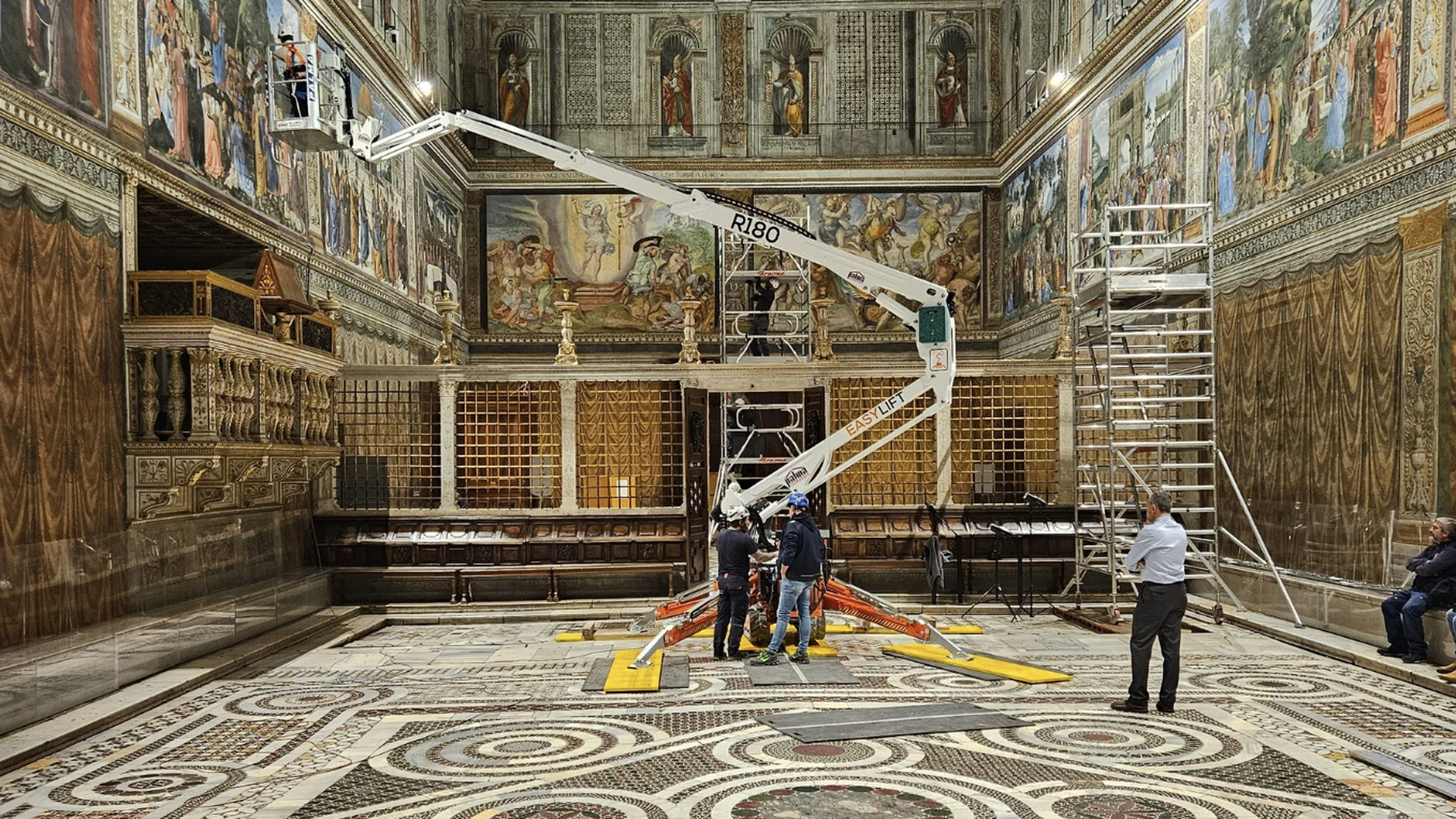
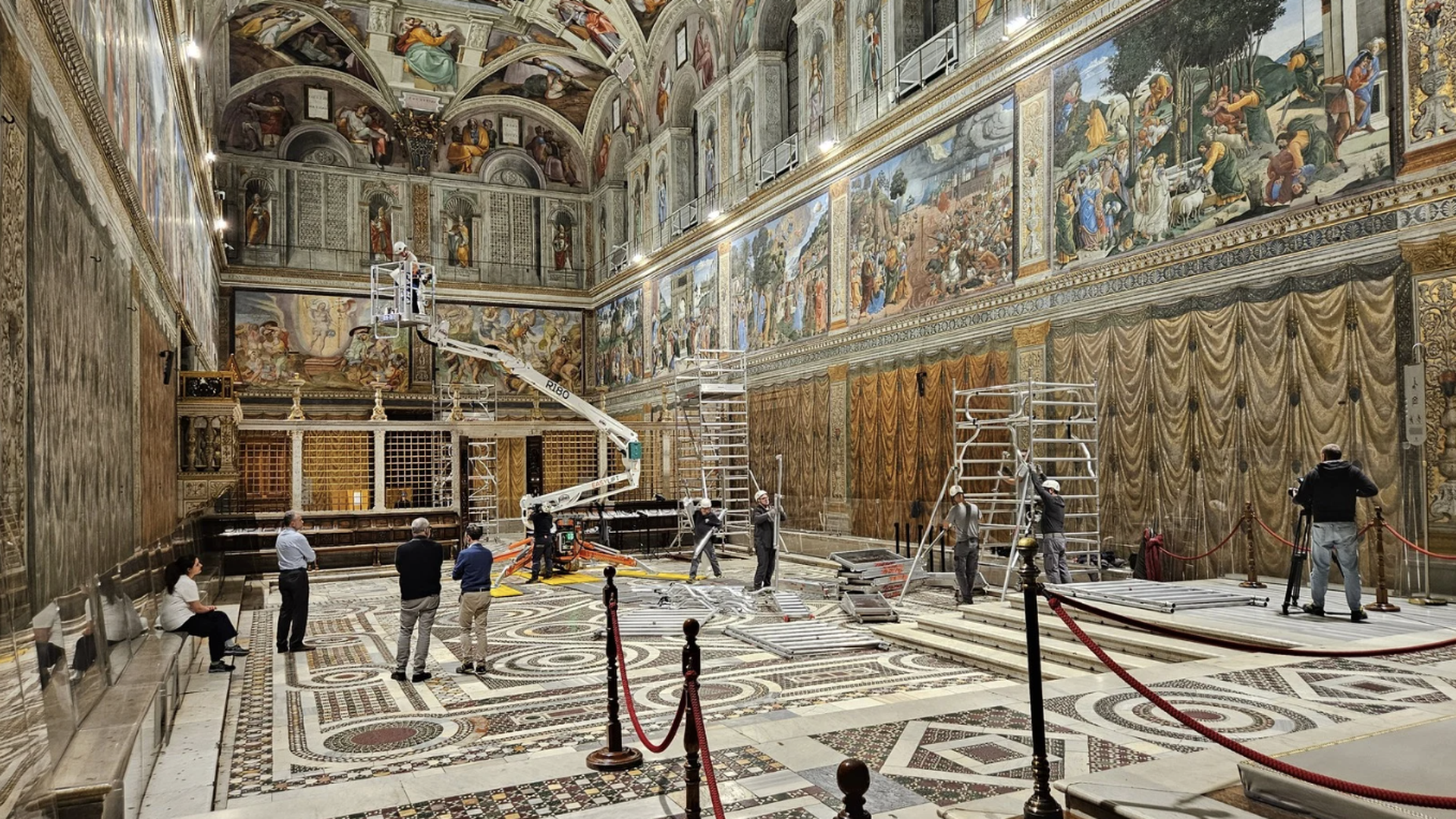
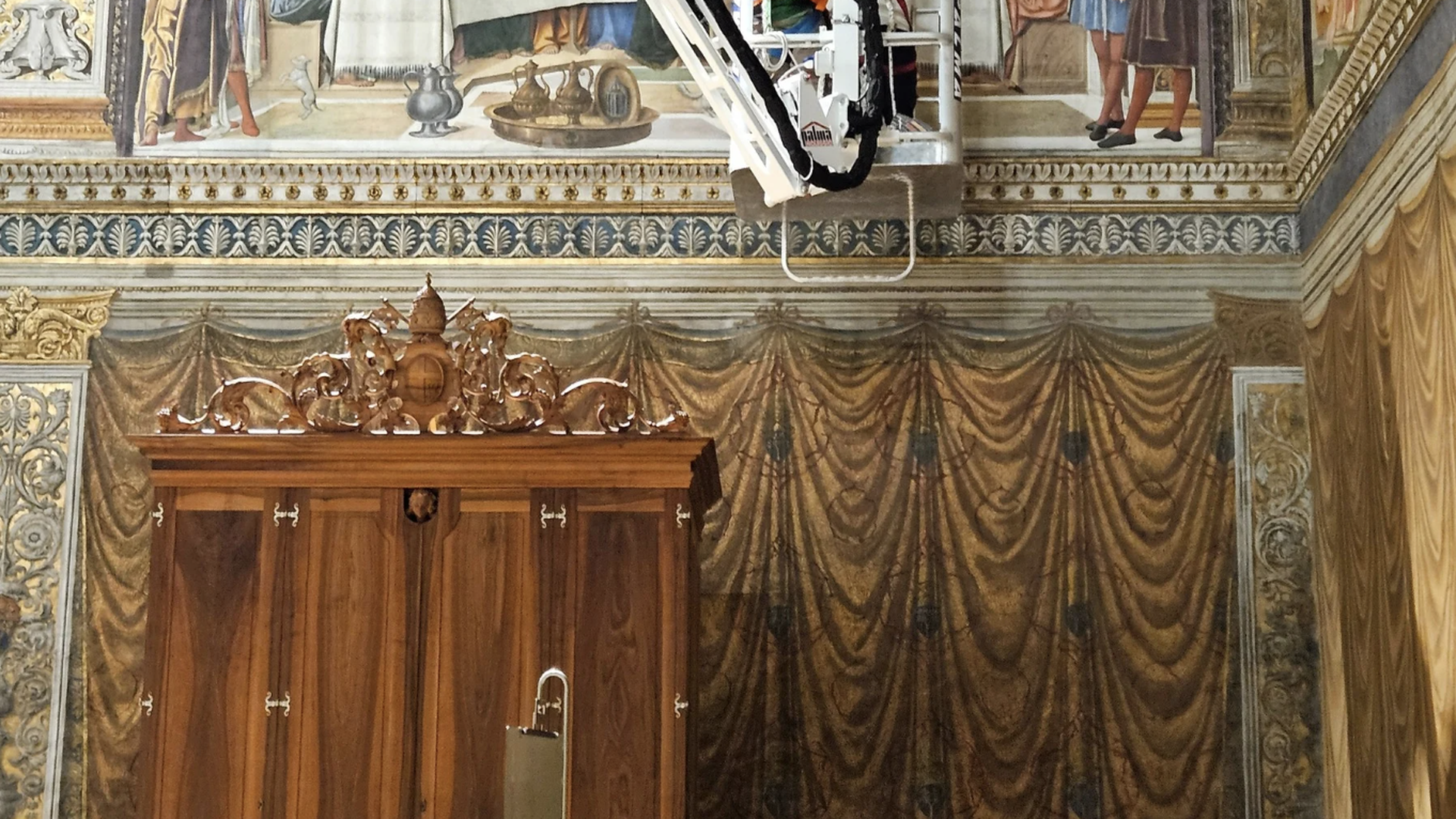
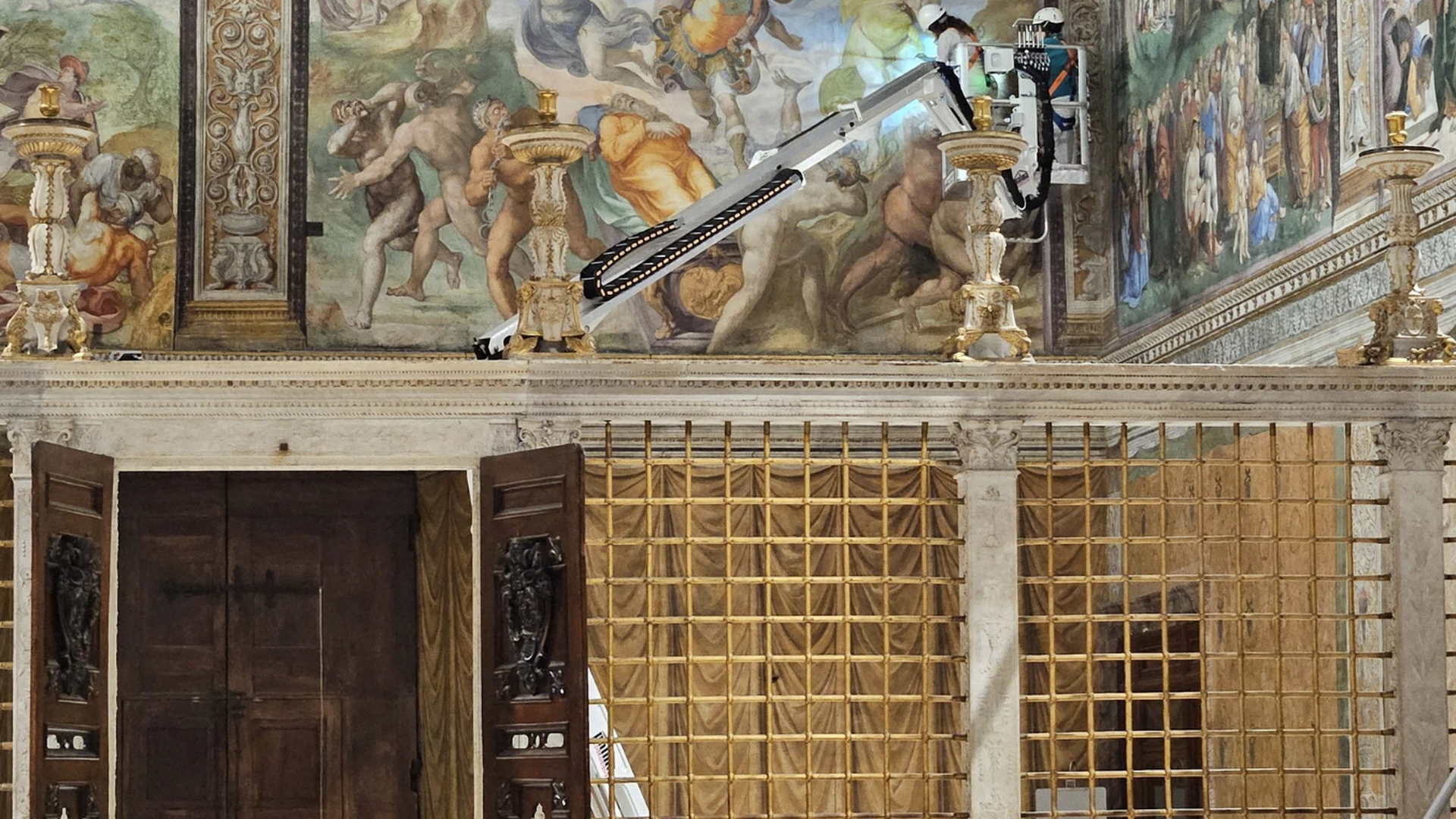
Once again, in this Jubilee Year 2025, the Sistine Chapel Ordinary Maintenance Plan has been performed thanks to the Prefecture of the Papal Household, the Office for Papal Liturgical Celebrations, the Superior Organs of the Governorate and the Directorate of the Museums, and the generosity of the Patrons of the Arts of the Vatican Museums.
During January and February, from Monday to Saturday, after the Museum's closure to the public, restorers, diagnostic and conservation experts, plant technicians, and logisticians took turns ensuring the conservation of the frescoes and checking the proper functioning of the air conditioning and lighting systems, which are essential for the stability of the environment and the best enjoyment of the Sistine Chapel.
The work, completed over six weeks, from January 13 to February 21, included:
- Recognition and dusting of the frescoed surfaces of the Quattrocentisti painters (Sandro Botticelli, Pietro Perugino, Pinturicchio, Domenico Ghirlandaio, Luca Signorelli, Piero di Cosimo, Cosimo Rosselli) and the paintings of fake curtains
- Verification of the state of conservation of the Last Judgement
- Inspection and dusting of the choir, altar, and marble transenna
- Monitoring of the frescoed areas subjected to previous extraction treatments
- Diagnostic analysis by imaging, colorimetry, and biological swabs
- Maintenance and control of the air conditioning and lighting systems
- Updating of the environmental monitoring systems

Sistine Chapel Periodic Conservation Maintenance Plan
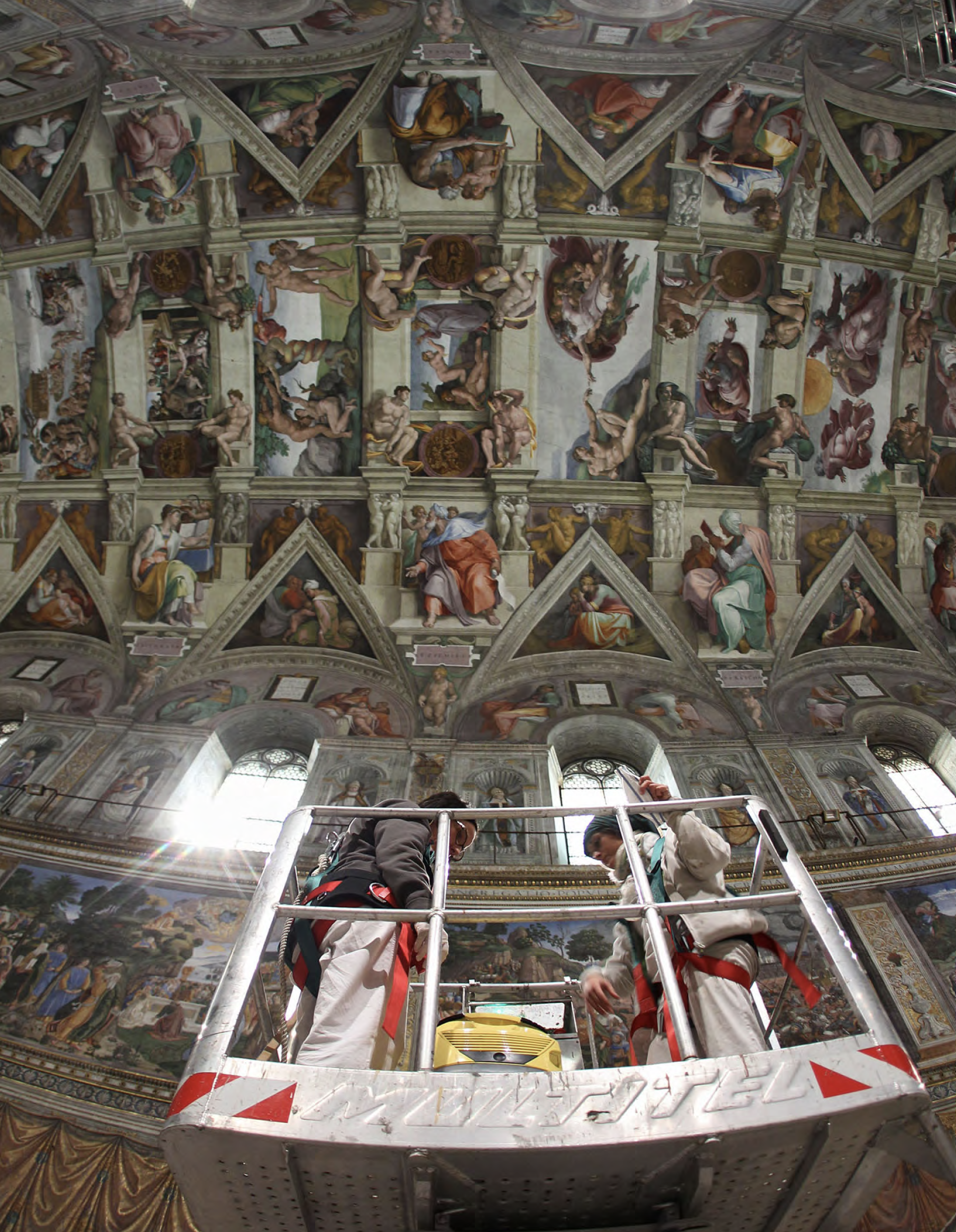
Details
Adopted by: The Florida Chapter
Museum: Sistine Chapel
Laboratory: Conservator‘s Office
Wishbook year: 2024
Description
The Periodic Conservation Maintenance Plan of the Sistine Chapel is the result of a complex organizational “machine,” which involves a plurality of skills ranging from the technical-scientific, logistical, and administrative sectors of the Museums. The Infrastructure and Services Directorate of the Governorate and the accredited external firms are committed to preserving the delicate balance within the “Sistine Chapel System”.
Balance is at the basis of maintaining the optimal state of health of the Sistine frescoes, linked in a direct way to the physical-chemical conditions of the environment that houses them, and that throughout the year is checked daily by the network of sensors that are specially designed and implemented for environmental monitoring. Promoted with conviction by the Museums management since 2012, as part of the broader strategy of preventive conservation of the collections on display and in storage, the Intervention Protocol is in the following operations: reconnaissance and periodic removal of dust from the painted surfaces, the chancel, the altar and the marble transept, gradual removal of any salification still present on the paintings, mapping of the state of conservation and review of areas subjected to previous consolidation and cleaning treatments, diagnostic analysis, maintenance and control of air conditioning and lighting systems and the entire monitoring systems.
The routine maintenance service lasts 5-6 weeks, usually between January and February, with evening working hours when the public is not present. For work at great heights, the operators use two mobile elevating platforms made available by the Governorate’s Infrastructure and Services Department, which allows them to reach a height of 20 meters. These platforms permit close inspections of the frescoed surfaces with the additional ability to maintain the terminal parts of the air conditioning, lighting systems, and the entire network of sensors for accurate environmental monitoring.
The Conservation Maintenance Plan is an essential part of state-of-the-art conservation sciences. The plan includes forming studies, lauching research, making discovieries, and collecting data to allow restorers, scientists, and technicians to evolve practices that use increasingly accurate and less invasive technologies. The Plan is configured as a best practice, consistent with the objective of ensuring the works - from frescoed surfaces to marble artifacts - the best conservation, and, at the same time, offering it for the public view and education offering it for the education and view of the public.
TOTAL COST: € 231.075,80 ($ 246,927.60)
Media

Sistine Chapel Periodic Conservation Maintenance Plan
Restorations Update: Sistine Chapel Periodic Conservation Maintenance Plan - Report
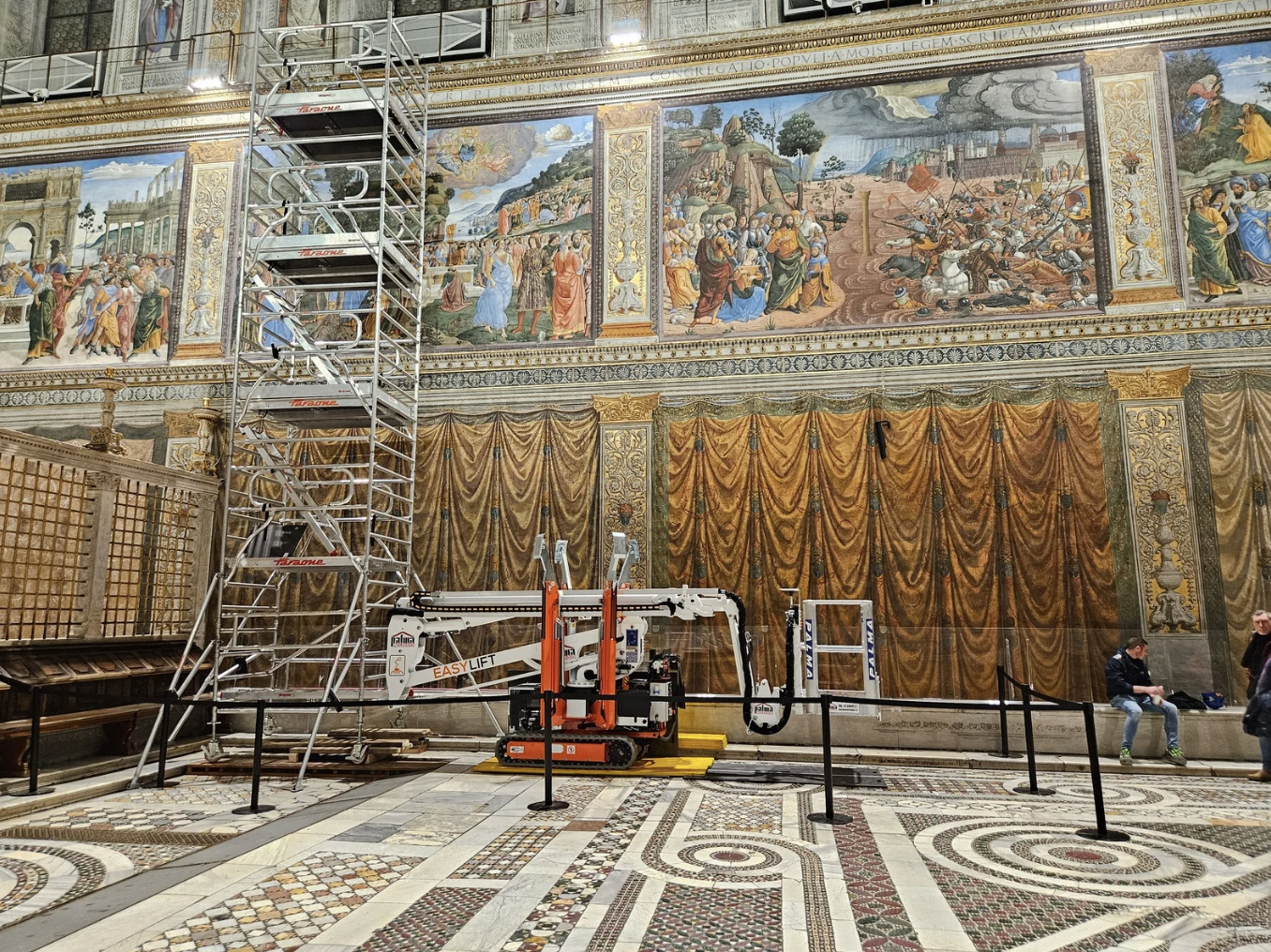
Once again, in this Jubilee Year 2025, the Sistine Chapel Ordinary Maintenance Plan has been performed thanks to the Prefecture of the Papal Household, the Office for Papal Liturgical Celebrations, the Superior Organs of the Governorate and the Directorate of the Museums, and the generosity of the Patrons of the Arts of the Vatican Museums.
During January and February, from Monday to Saturday, after the Museum's closure to the public, restorers, diagnostic and conservation experts, plant technicians, and logisticians took turns ensuring the conservation of the frescoes and checking the proper functioning of the air conditioning and lighting systems, which are essential for the stability of the environment and the best enjoyment of the Sistine Chapel.
The work, completed over six weeks, from January 13 to February 21, included:
- Recognition and dusting of the frescoed surfaces of the Quattrocentisti painters (Sandro Botticelli, Pietro Perugino, Pinturicchio, Domenico Ghirlandaio, Luca Signorelli, Piero di Cosimo, Cosimo Rosselli) and the paintings of fake curtains
- Verification of the state of conservation of the Last Judgement
- Inspection and dusting of the choir, altar, and marble transenna
- Monitoring of the frescoed areas subjected to previous extraction treatments
- Diagnostic analysis by imaging, colorimetry, and biological swabs
- Maintenance and control of the air conditioning and lighting systems
- Updating of the environmental monitoring systems
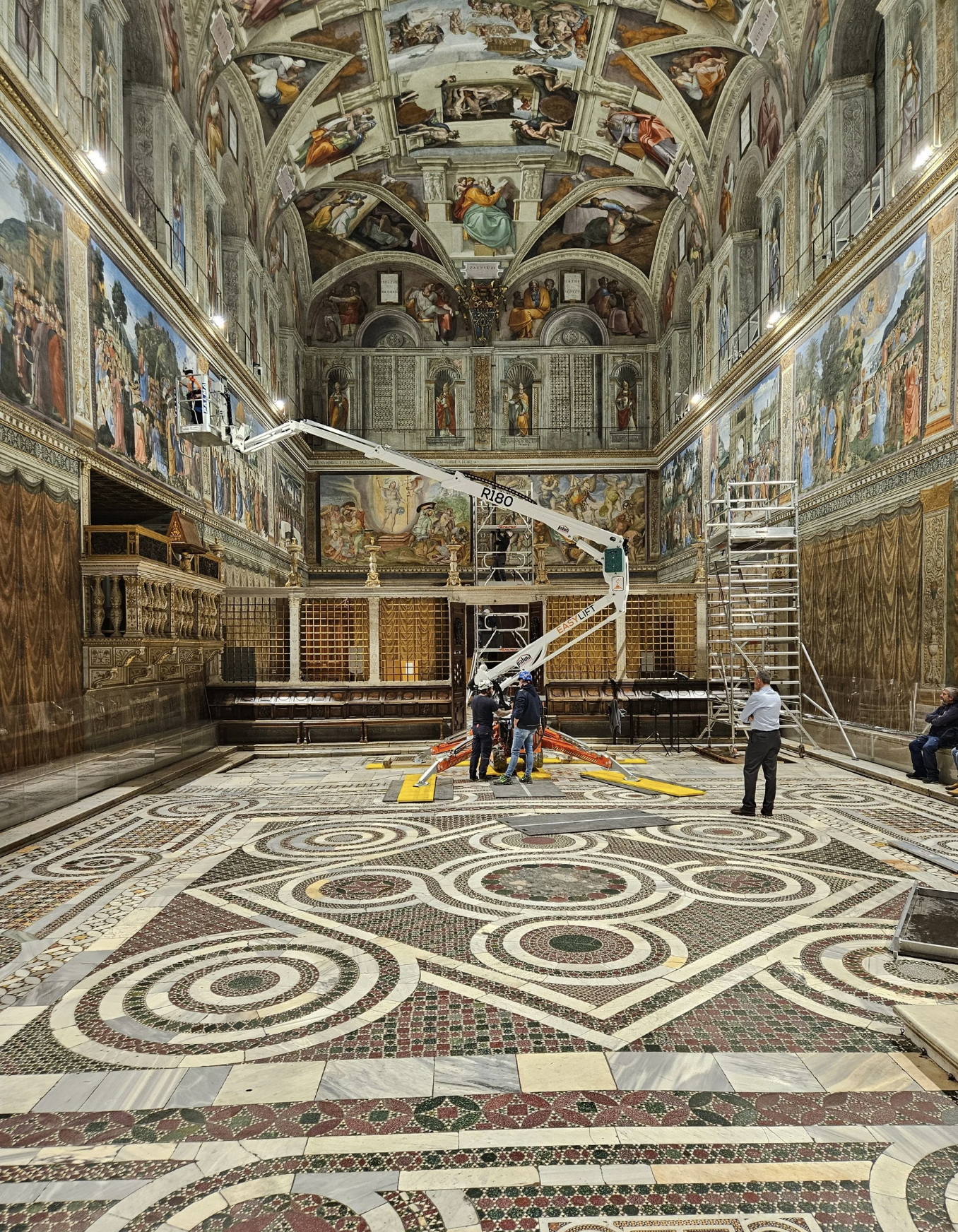
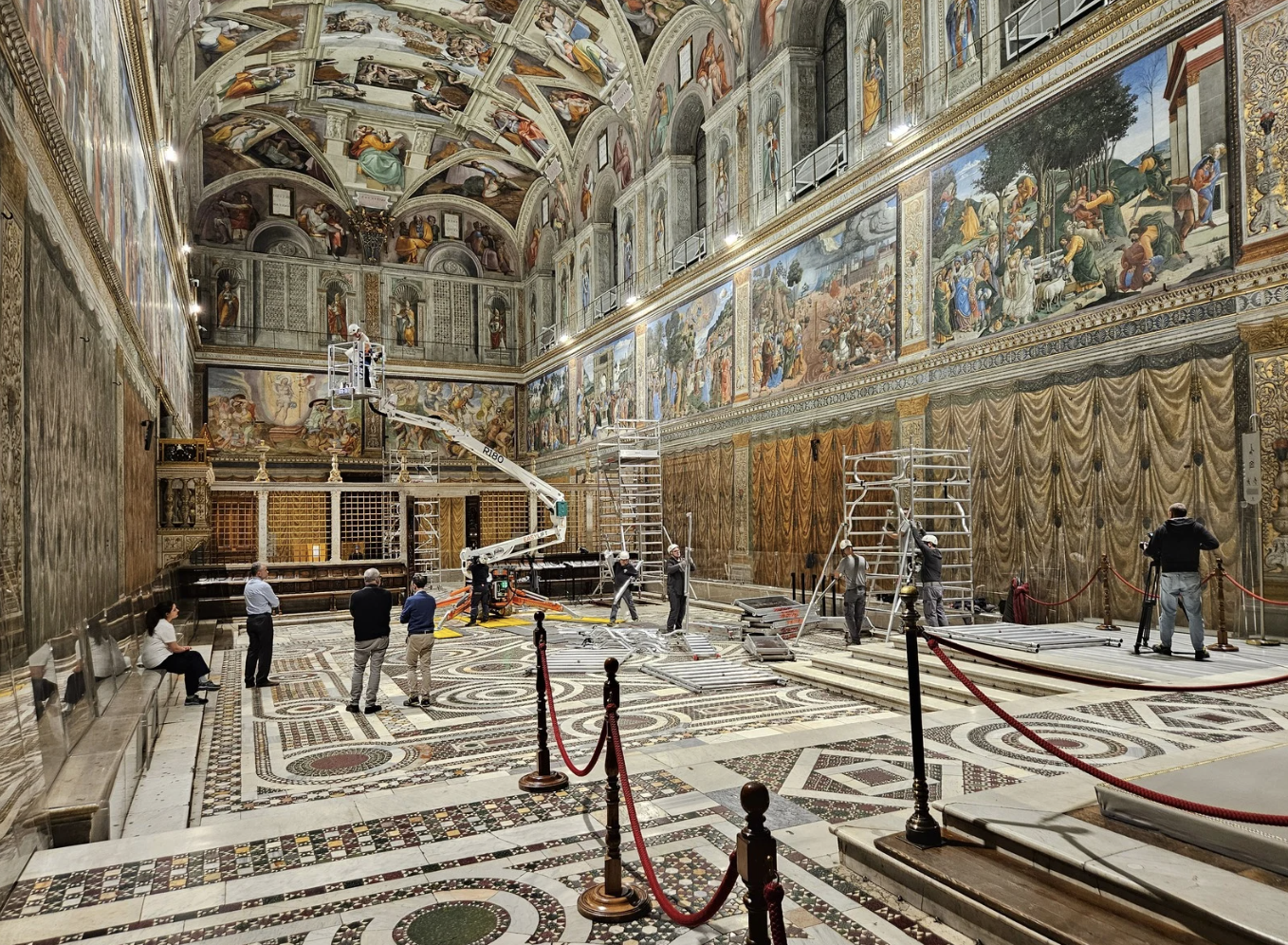
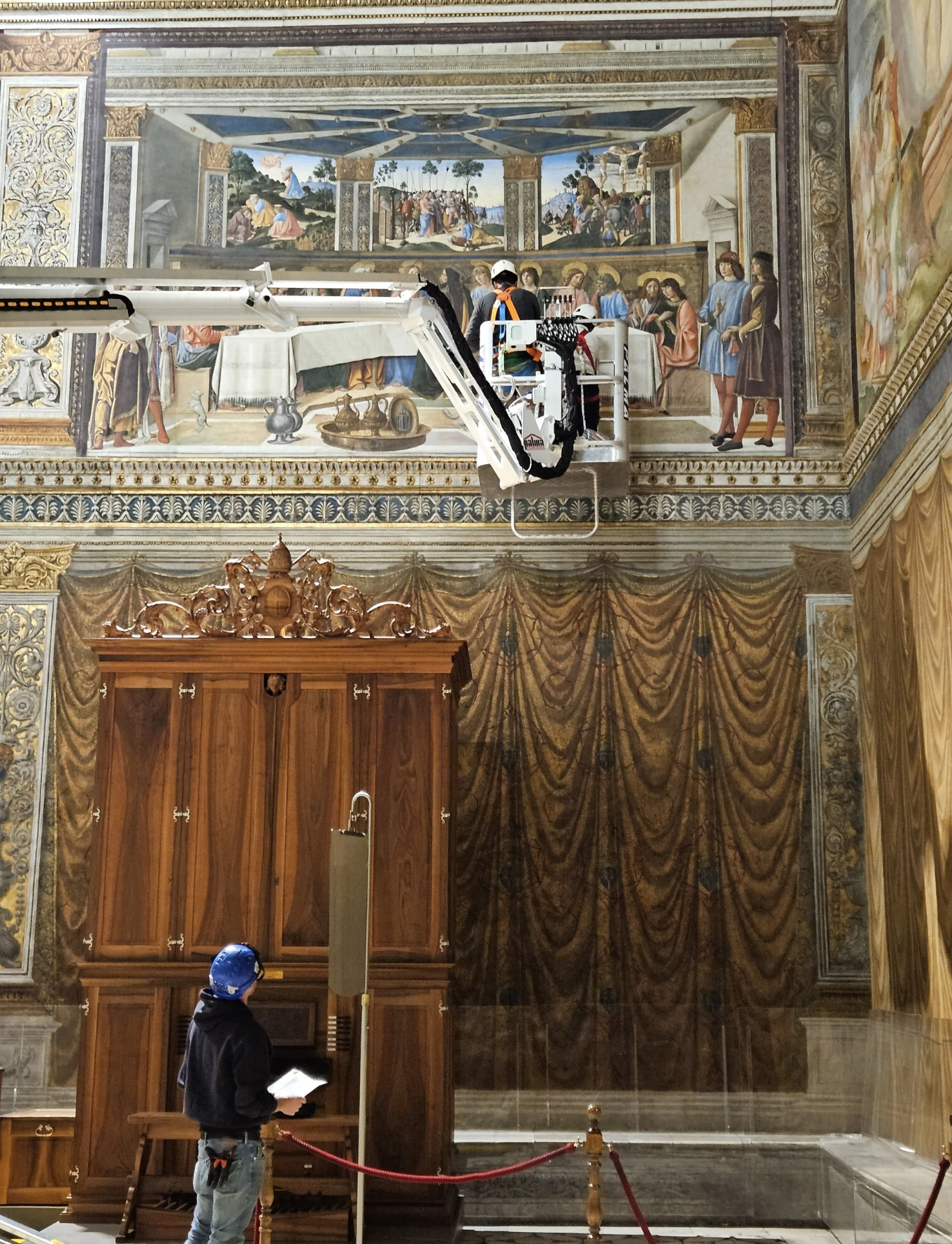
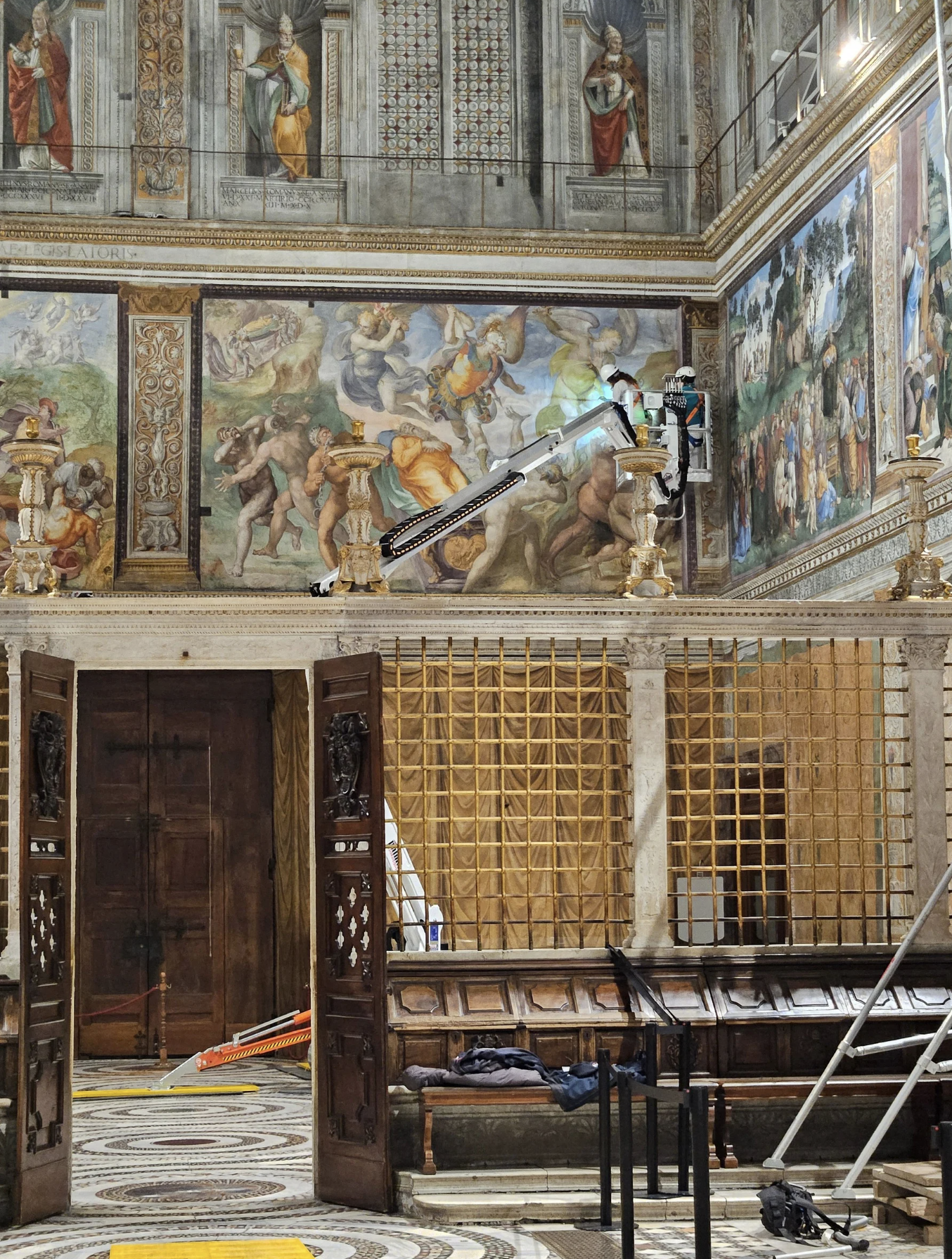

© 2025 Patrons of the Arts
in the Vatican Museums
Vatican Museums V-00120,
Vatican City State (Europe)
+39 0669864499
